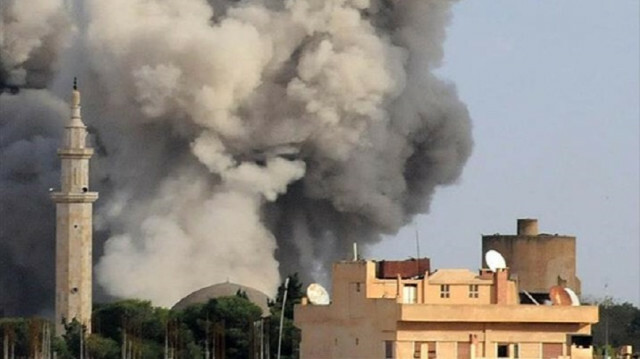
Hundreds killed on Aug. 21, 2013, in strike by Assad regime in Eastern Ghouta
Eight years have passed since the Bashar al-Assad regime struck Eastern Ghouta with chemical weapons on Aug. 21, 2013, but victims are still haunted by the nightmarish experience that killed more than 1,400 civilians.
Thousands of women and children were affected by the poisonous agents in the attack in Syria, which is still fresh in the memory of survivors.
Muhammad Sami, who was forced to migrate from Eastern Ghouta to Idlib, said the attack culminated in the deaths of 37 relatives.
He said he is alive only because he was not at the location at the time of the attack.
“I came back to the house to search for my family following the attack. I found none of them,” he said.
Sami rushed to find relatives but he said it was as if hell broke loose and everyone he found was lifeless.
He said that hundreds also were killed in the aftermath and his grudge against the regime is growing daily.
Sami said the international community did not have any action following the massacre.
“We searched for a safe zone for the injured looking forward to being rescued. I was writing the names of the deceased on their bodies. I lost 37 relatives of mine, among whom were my uncles, sisters-in-law, cousins and aunts,” he said, adding the Assad regime targeted the same region with artilleries one day after the chemical strike.
- Damascus, environs top target for chemical attacks
Since the start of the war in Syria, the Assad regime launched chemical attacks on Damascus and its environs 102 times, 45 in Idlib, 30 in Hama, 26 in Homs, three in Daraa, three in Deir ez-Zor, and one in Latakia.
The Syrian Network for Human Rights (SNHR) has documented identifications of more than 1,500 people killed in strikes.
- Russian, Chinese vetoes
Russia and China have used their veto power 16 times in favor of the Syrian regime at UN Security Council meetings. They also used the veto six times in sessions dealing with chemical weapon attacks.

